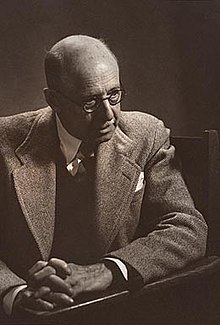John Goodwin Lyman
| John Goodwin Lyman | |
|---|---|
 |
|
| Born | 29 September 1886 Biddeford, Maine |
| Died | 26 May 1967 Barbados, Christ Church |
| Nationality | Canadian |
| Education | Académie Julian |
| Known for | Painter, Art Critic |
| Notable work | Woman With a White Collar |
John Goodwin Lyman (29 September 1886 — 26 May 1967) was an American-born Canadian modernist painter active largely in Montreal. In the 1930s he did much to promote modern art in Canada, founding the Contemporary Art Society in 1939. Stylistically he opposed both the Group of Seven and the Canadian Group of Painters, painting in a more "refined" style influenced by the School of Paris.
Lyman was born in Biddeford, Maine. His parents were Americans who emigrated to Victoria, B.C., Online. Oxford Art Online, (accessed February 3, 2012; subscription required).
After spending two years at McGill University, Lyman departed for Paris in spring of 1907, where he studied art until the fall, when at his father's urging he returned to study architecture at the Royal College of Art. January of next year found him back in Paris, where he studied at Académie Julian under Laurens. There he formed a friendship with fellow Canadian James Wilson Morrice. Lyman enrolled at the Academie Matisse in the fall of 1909, which he left due to illness the next spring, returning to Montreal in the summer of 1910. Despite the brevity of his encounter with the master, Matisse would be a primary influence upon Lyman in the years to come.
That summer he married Corrine St. Pierre, and the two spent the next two years traveling intermittently in France. Upon his return to Montreal he exhibited four Fauve inspired works in the spring exhibit of the Art Academy of Montreal, which were met with great vitriol in the conservative press of Quebec. Another exhibit of forty-two oil paintings, his first one-man show, opened on May twenty-first and received a similar reaction.
Due to his rejection in his native country, Lyman and his wife spent twenty-eight peripatetic years living in France, Spain, and North Africa. He bought a villa in Southern France in 1922, where he corresponded with Matisse. In October 1927 he briefly returned to Montreal for the opening of his second one-man show. The Great Depression lessened his income, forcing him to return to Montreal in 1931.
...
Wikipedia
